Librairie La Fontaine by Kawamura-Ganjavian and NOR architectes
A ring of shelves encloses a padded reading room at this bookshop by designers Kawamura-Ganjavian and architects NOR.
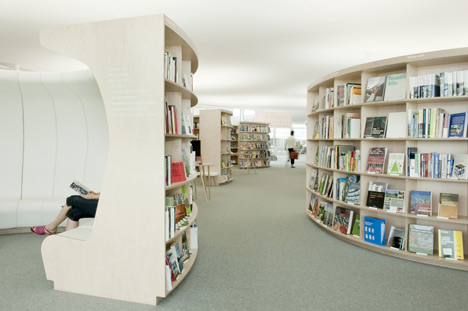
The Librairie La Fontaine is located in the SANAA-designed Rolex Learning Center on the campus of science and technology university EPFL (Ecole Polytechnique Fédérale de Lausanne) in Switzerland.
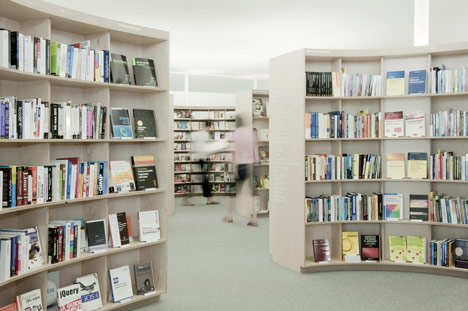
Kawamura-Ganjavian created curling bookcases in response to SANAA's building, which features undulating floors and ceilings pierced by cylindrical atriums.
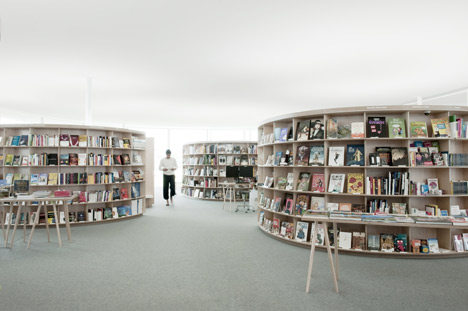
Each shelving enclave has a different size and configuration, with some encircling banks of seating and others wrapping more concentric shelves.
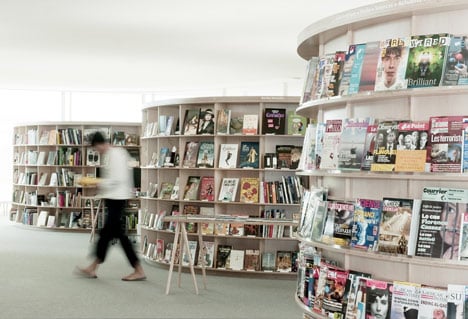
Little book stands and trestle tables are also dotted around the store.
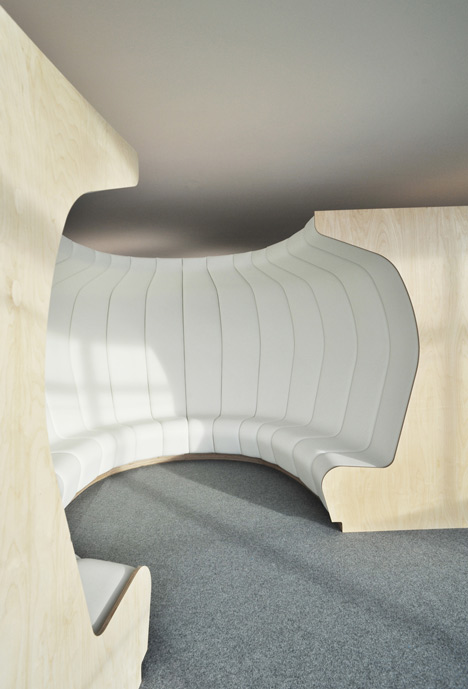
The bookshop was completed at the same time as the Rolex Learning Center in 2010. Read more about the building in our earlier story. We've also featured Kawamura-Ganjavian on Dezeen before - check out their exhibition stands made of sticks covered in velcro here.
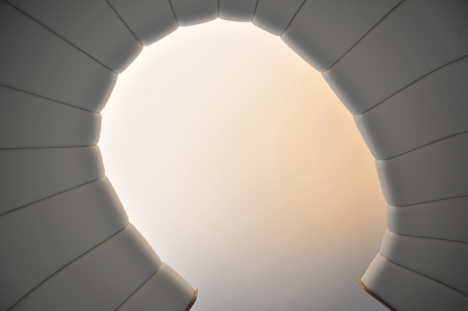
See more stories about bookshops on Dezeen »
See more stories about books on Dezeen »
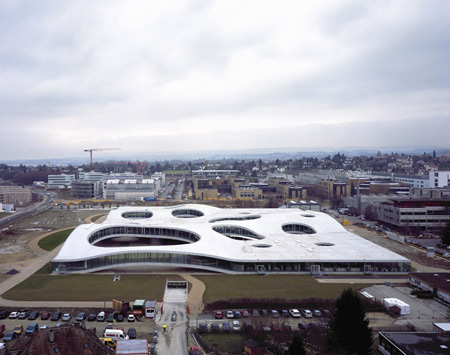
Above: Rolex Learning Center by SANAA
Photography is by Anne Laure Lechat.
Here's some more information from Kawamura-Ganjavian:
Librairie La Fontaine is a historic bookstore inside the EPFL campus in Lausanne. Its venue moved in 2010 to the new Rolex Learning Centre designed by SANAA architects.
Taking into consideration the architectural language of the host building the bookstore is organised around 5 "pods" that articulate thematic categories. All pods are slightly different from each other, housing books or magazines on their outside and inside, and even a cozy reading cocoon.
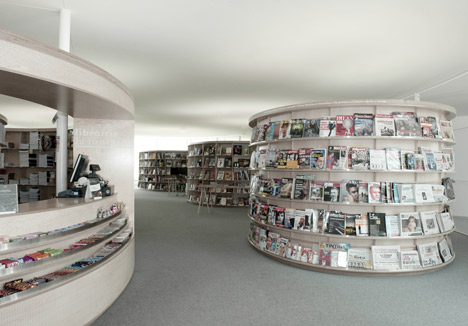
The space moves away from a conventional aisle-and-bookshelf rigidity and creates a fluid environment with a rich variety of spaces where the customers feel at ease to explore and roam idly. The pods are as well the subtle source of indirect illumination. The project is enhanced with pieces of furniture (tables, benches, bookstands, dustbins, desk dividers) designed by the authors.
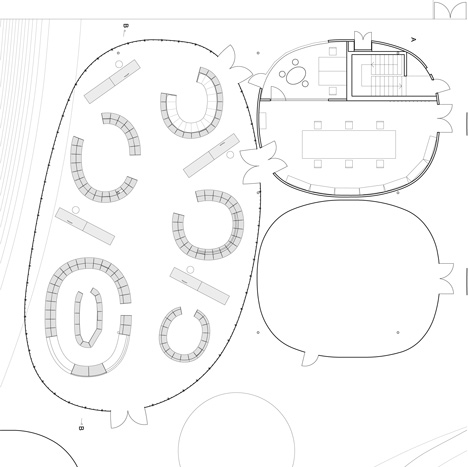
The complex geometry of the pods was made possible thanks to a smart combination of state-of-the-art numeric control manufacturing techniques and advanced Swiss cabinet-making skills.